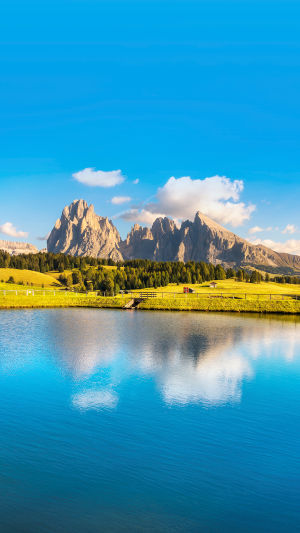The Dolomites, located in northern Italy, are one of the most stunning mountain ranges in the world. With their dramatic peaks, lush meadows, and crystal-clear alpine lakes, the region offers a breathtaking escape for nature lovers and adventurers alike.
If you’re planning a trip to the Dolomites, this guide will help you make the most of your visit, providing essential travel tips, scenic highlights, and practical information.
<h3>Best Time to Visit</h3>
The Dolomites are a year-round destination, but the experience varies dramatically with the seasons. If you're a hiking enthusiast, the best time to visit is from late June to early October when the trails are snow-free and the meadows are in full bloom. For winter sports enthusiasts, the ski season typically runs from December to March. Spring and autumn are also lovely for quieter experiences, though some mountain roads may close due to weather conditions.
<h3>Entry Fees and Access</h3>
One of the great things about visiting the Dolomites is that access to the natural landscape is free. There are no entry fees to enjoy the trails, lakes, and meadows. However, certain protected areas and parks, such as Tre Cime di Lavaredo, may have parking fees, typically ranging from €6 to €30, depending on the season and location.
<h3>Getting There and Around</h3>
The nearest international airports are in Venice, Verona, and Innsbruck (Austria). From these airports, travelers can rent a car or take public transport to reach the Dolomites. Driving is highly recommended for flexibility, as the region’s beauty is best explored at your own pace. Be sure to factor in costs for rental cars and gas, with gas prices in Italy averaging around €1.70 per liter.
Public buses and trains can also get you to larger towns like Cortina d'Ampezzo or Bolzano, but to access remote valleys and trailheads, having a car is more convenient. If you prefer not to drive, consider guided tours that offer transportation and access to remote areas.
<h3>Scenic Highlights in the Dolomites</h3>
<b>1. Tre Cime di Lavaredo</b>
One of the most iconic spots in the Dolomites, Tre Cime di Lavaredo, offers visitors a challenging yet rewarding hike around these towering peaks. The circular route takes around four to five hours to complete, providing unbeatable views at every turn.
<b>2. Lago di Braies</b>
A serene and photogenic lake, Lago di Braies is known for its emerald waters and reflection of the surrounding mountains. You can rent a rowboat to explore the lake from the water or take an easy stroll along the shore. Visiting is free, but parking fees apply.
<b>3. Alpe di Siusi</b>
The largest high-altitude Alpine meadow in Europe, Alpe di Siusi, offers gentle walks amidst rolling hills and stunning mountain backdrops. For Lykkers looking for a more relaxed experience, this area is perfect for leisurely hikes and picnics.
<h3>Accommodation</h3>
The Dolomites offer a wide range of accommodation, from budget hostels to luxury mountain resorts. Popular areas like Cortina d'Ampezzo and Val Gardena have higher-end options, while smaller villages like Ortisei or Corvara offer more affordable lodgings. Expect prices to vary, with high season rates for hotels starting at €100 per night and going up significantly depending on the location and amenities.
For an authentic mountain experience, consider staying in a rifugio, or mountain hut, which provides simple yet comfortable accommodation along popular hiking trails. Most rifugi offer meals, making them an excellent choice for hikers exploring multi-day routes.
<h3>Activities</h3>
Beyond hiking and skiing, the Dolomites offer plenty of outdoor activities for all ages. Rock climbing, cycling, and paragliding are popular during the summer months. During winter, the region transforms into a snow sports haven with options for skiing, snowboarding, and snowshoeing.
<h3>Dining</h3>
While exploring the Dolomites, make sure to indulge in the local cuisine. The region’s mix of Italian and Austrian influences means you’ll find dishes like speck (smoked meat), canederli (dumplings), and polenta on many menus. Many mountain huts offer traditional meals, allowing you to refuel with a hearty lunch while enjoying the views.
<h3>What to Bring</h3>
If you're visiting in the summer, pack sturdy hiking shoes, sunscreen, a hat, and layers, as the weather can change quickly in the mountains. In winter, bring warm clothes, waterproof boots, and gloves. A camera is a must to capture the stunning landscapes you'll encounter.
<h3>Final remarks</h3>
Whether you're an adventurer seeking challenging hikes or a traveler looking for serene landscapes, the Dolomites offer something for everyone. With towering peaks, tranquil lakes, and picturesque meadows, it’s no wonder this region remains a top destination for nature lovers. Plan your trip, pack your essentials, and get ready to explore one of the most beautiful places in Europe, Lykkers!
Dolomites, Italy: Tirolean Culture and Alpine Adventures - Rick Steves’ Europe Travel Guide
video by Rick Steves' Europe





